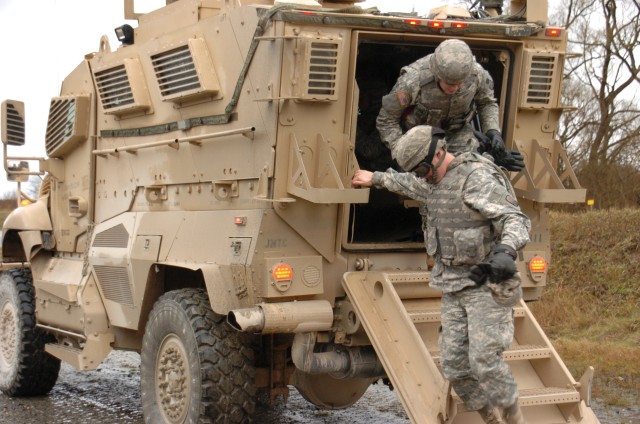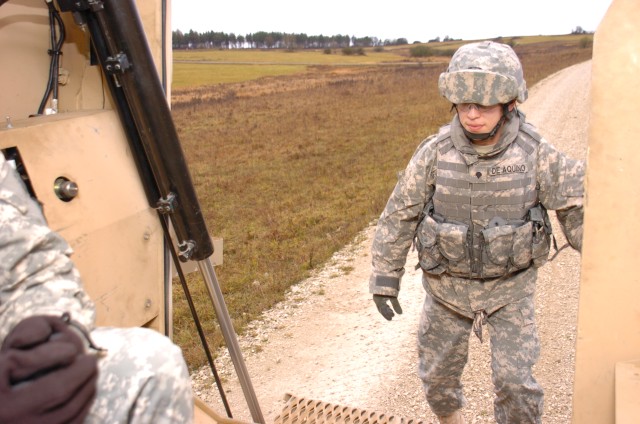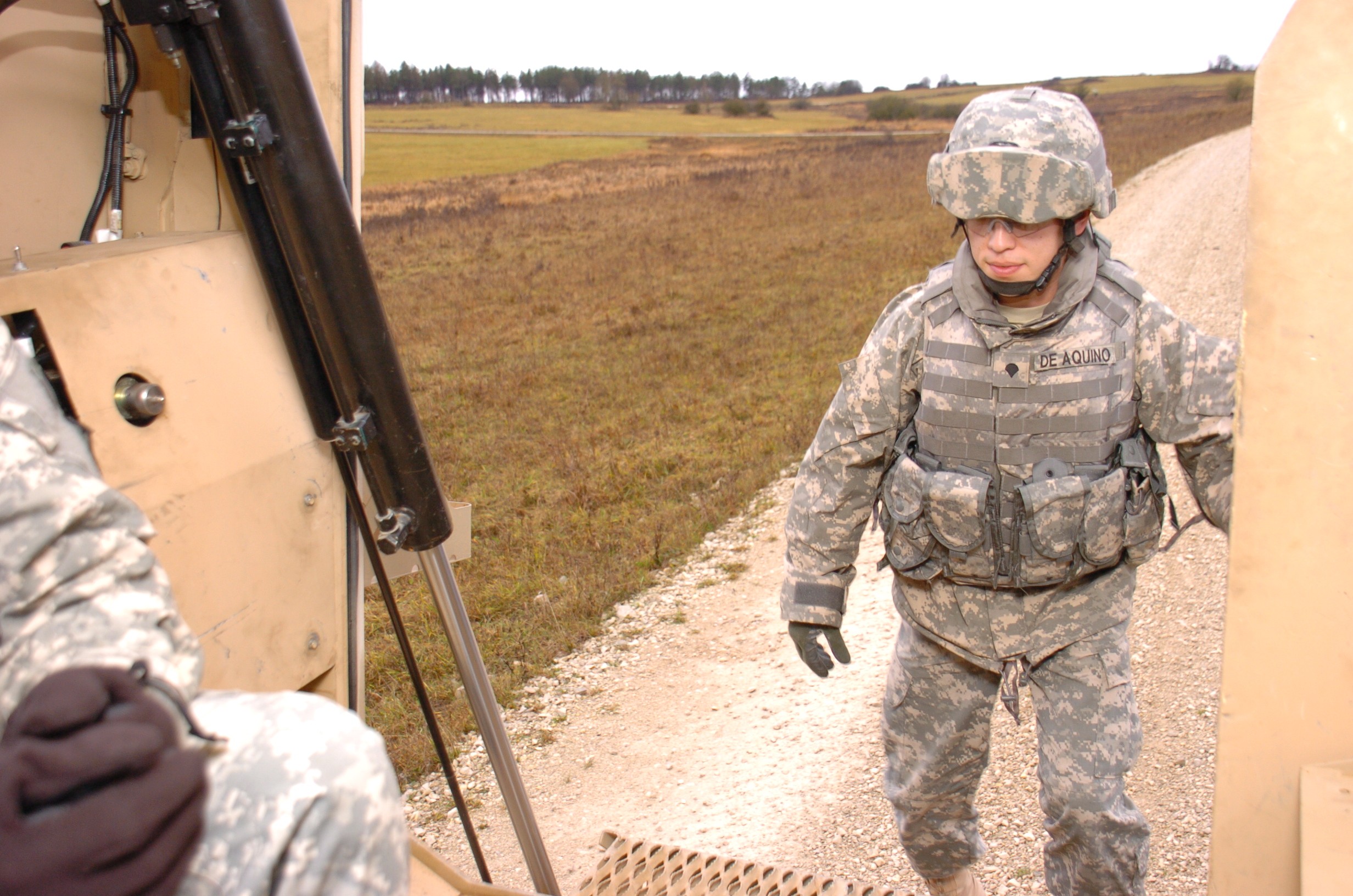GRAFENWOEHR, Germany - In order to better familiarize themselves with the equipment they may encounter while deployed, Soldiers from the 16th Sustainment Brigade's 18th Combat Sustainment Support Battalion and the 391st Combat Sustainment Support Battalion conducted training on Mine Resistant Ambush Protected vehicles Dec. 7-8 in Grafenwoehr, Germany.
The first day consisted of hands-on classroom instruction, which introduced the Soldiers to the basic specifications of the MRAP as well as how to perform preventative maintenance checks and services on the vehicle.
"The training has been mostly hands-on," said Spc. Edward Riddick, a personnel and administrative clerk with the 391st CSSB. "It has been very learnable, and the instructors have been very knowledgeable in teaching us what we needed to know about the vehicle. Most of what we've been taught is how to properly maintain the MRAP vehicle and how the systems work."
On the second day the Soldiers took turns driving the vehicles. Each Soldier drove for 20 minutes around the training areas between Grafenwoehr and Vilsek. The uneven dirt roads gave the Soldiers a feel for driving the MRAP vehicles on rough terrain.
"Most of the Soldiers enjoyed the class because they were introduced to new equipment that they haven't seen or haven't driven before," said Staff Sgt. Ivey McAllister, the lead instructor for the class who is assigned to the 391st CSSB.
But there were a few Soldiers in the class who had driven the MRAP downrange, said McAllister. These Soldiers were able to interject their combat experiences into the training for the benefit of those Soldiers who had never touched an MRAP vehicle before.
The Marine Corps started the MRAP program when it realized that many vehicles in use were highly vulnerable to Improvised Explosive Devices and small arms attacks. This vulnerability made these vehicles unsuitable for combat operations in Iraq and Afghanistan.
The MRAP became a joint program when the other services realized similar flaws in their ground vehicles. Between 2006 and 2007, there were 300 IED attacks against MRAP vehicles with no loss of life as a result of those attacks.




Social Sharing